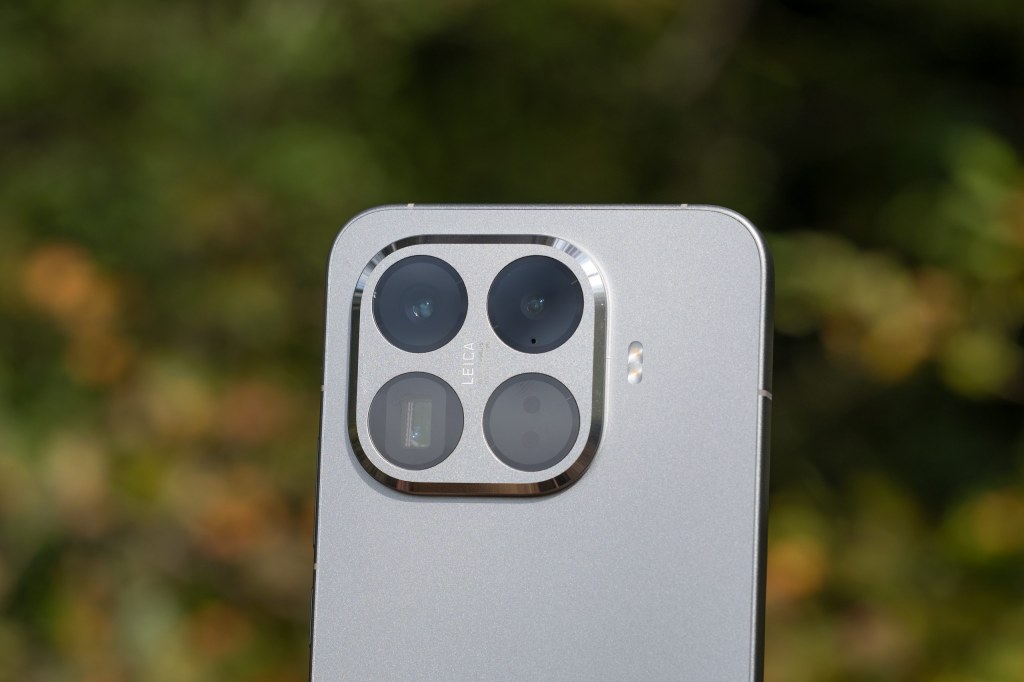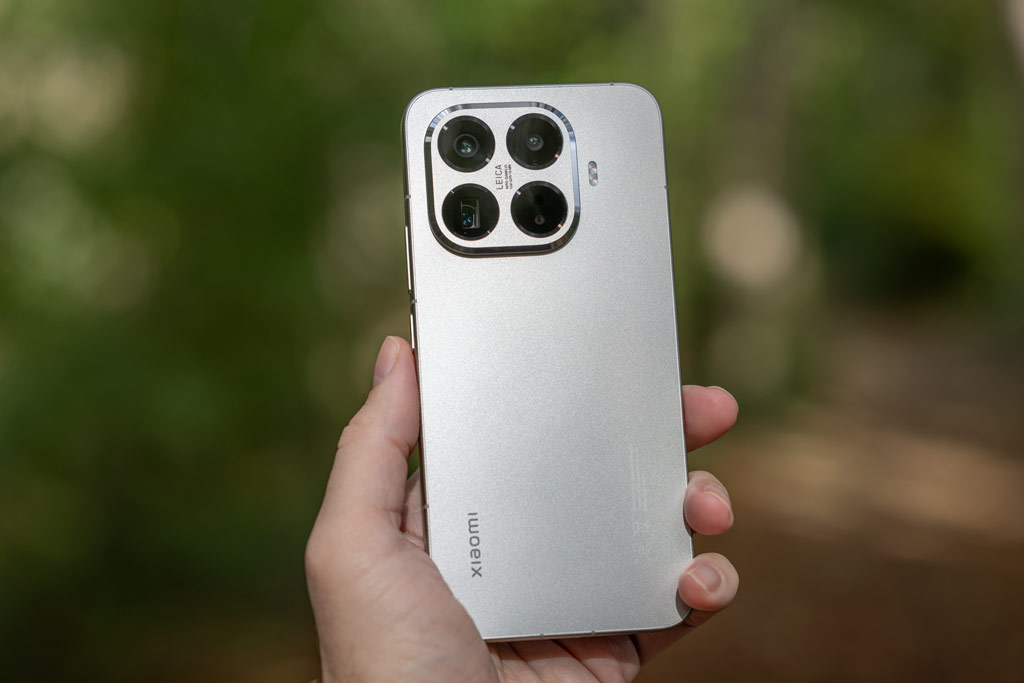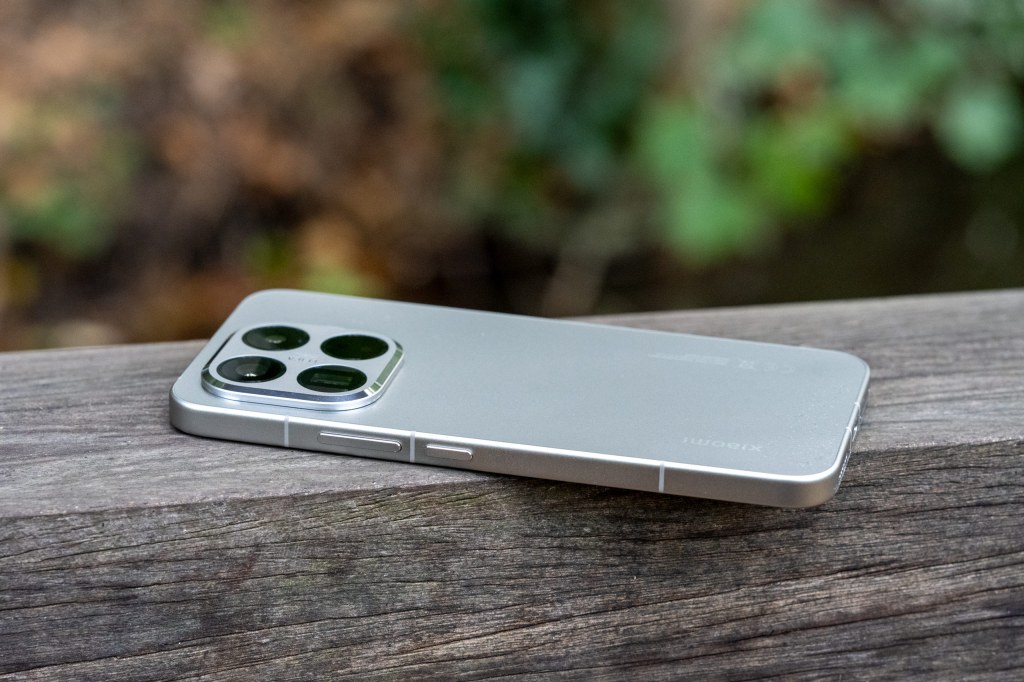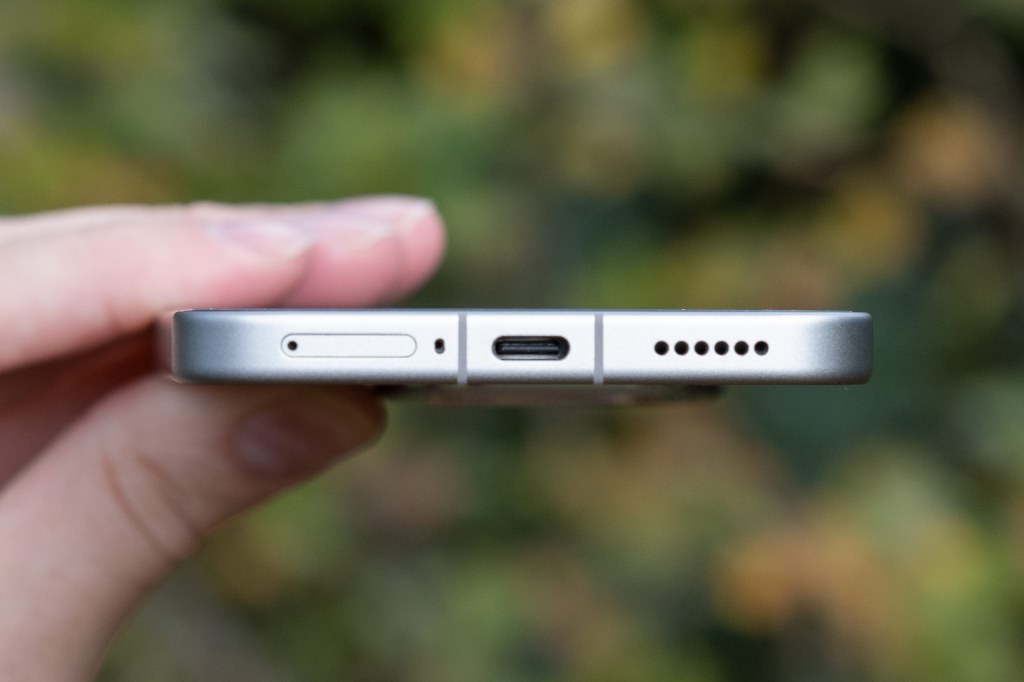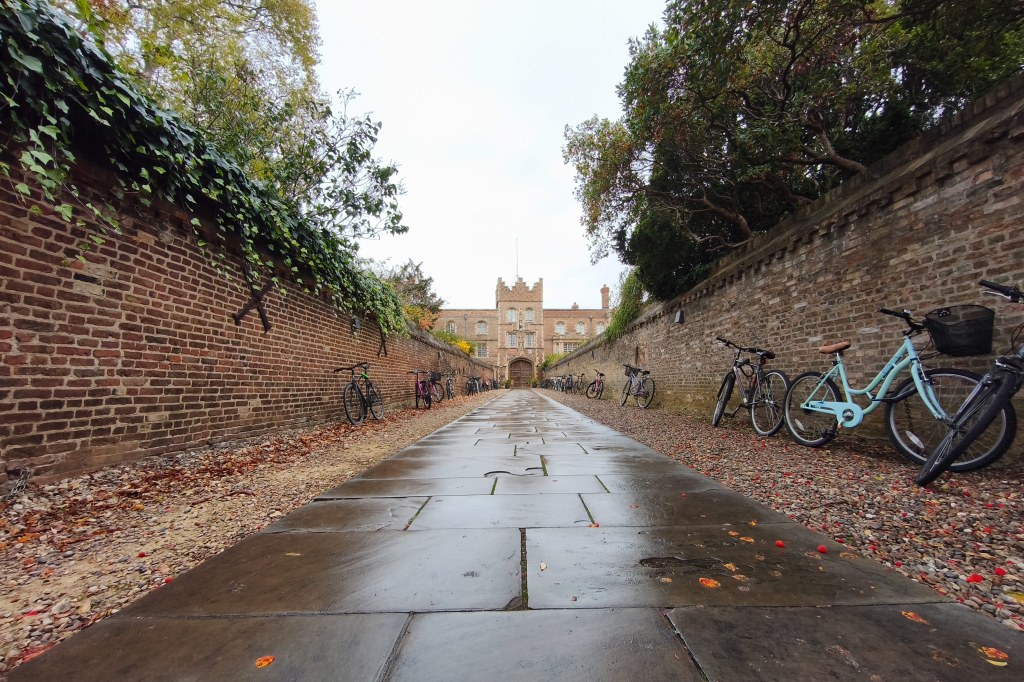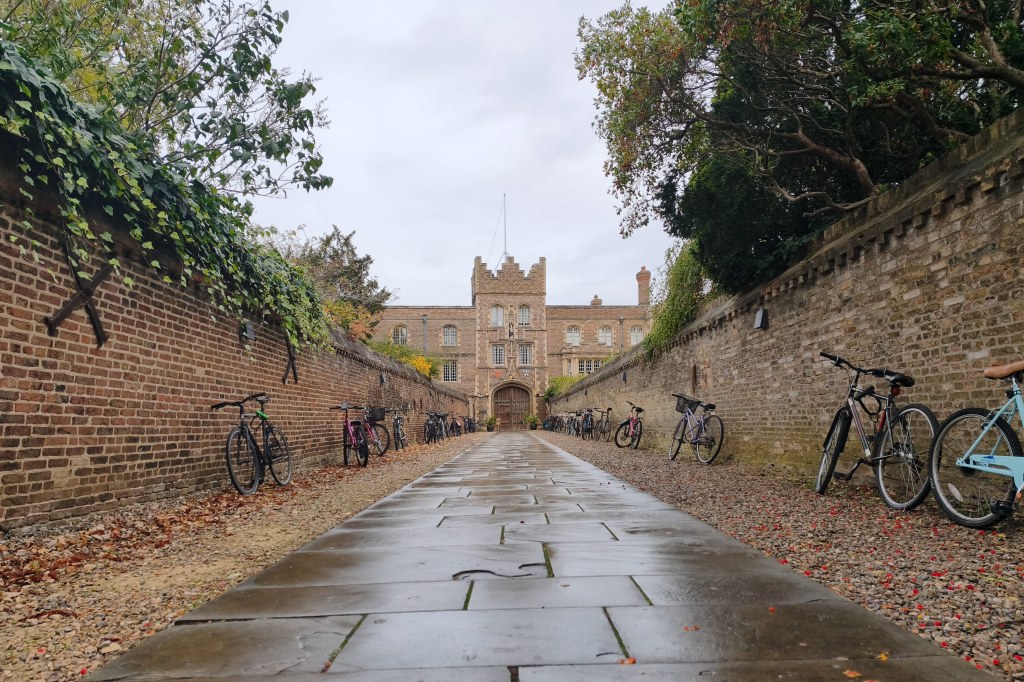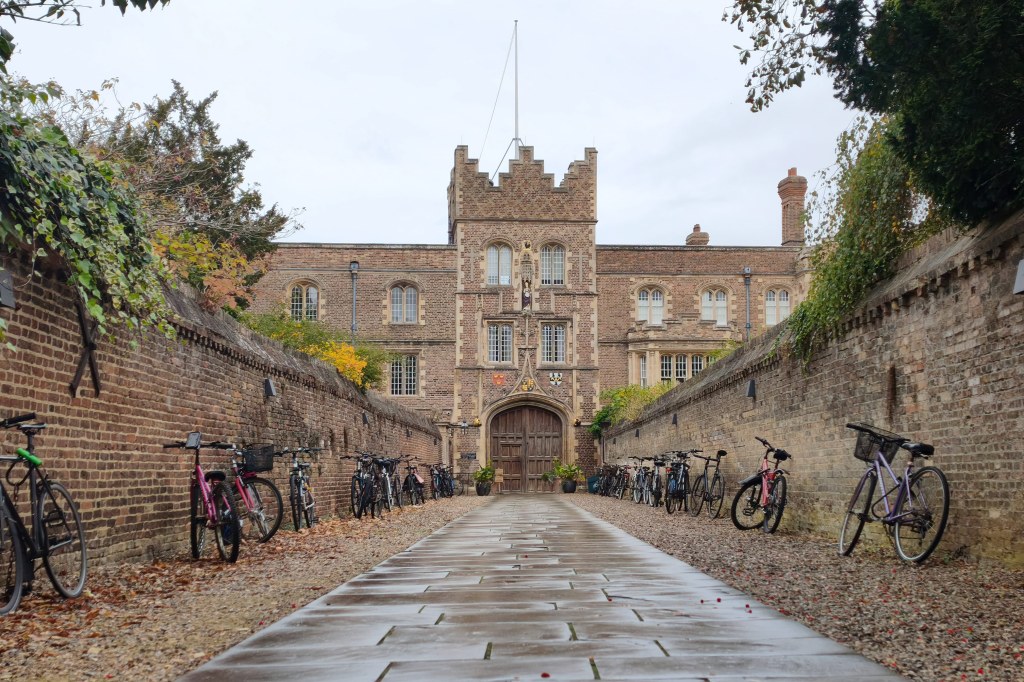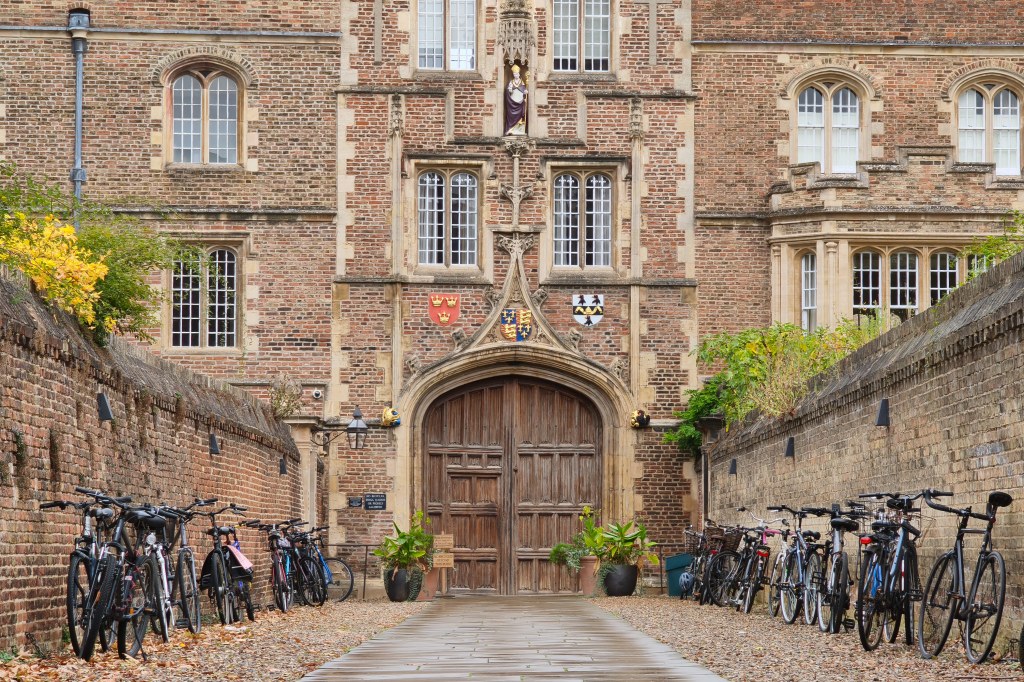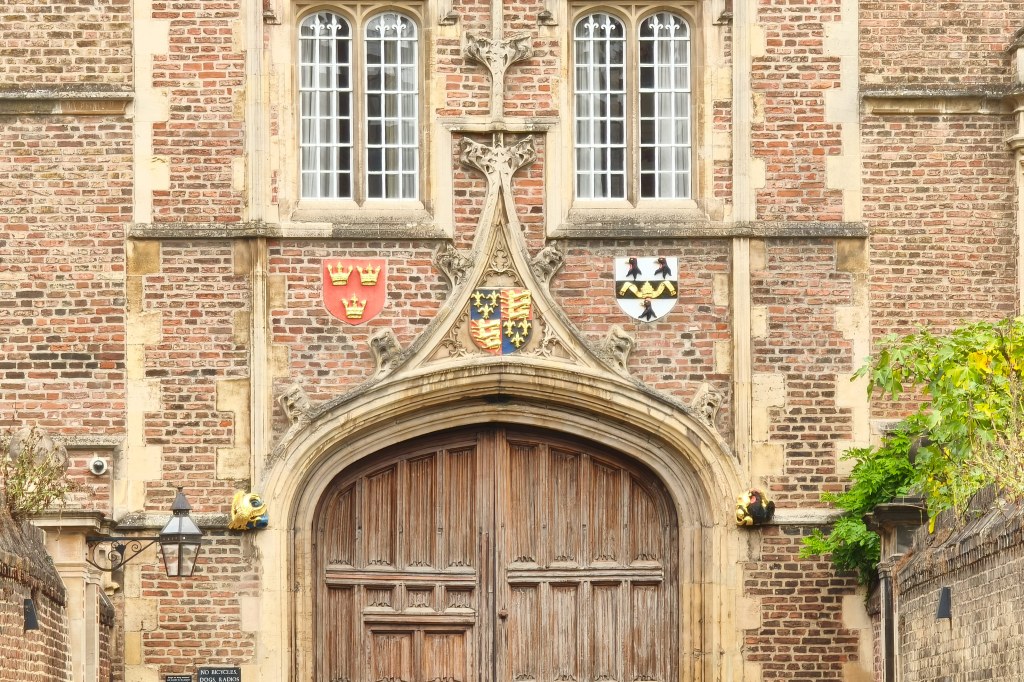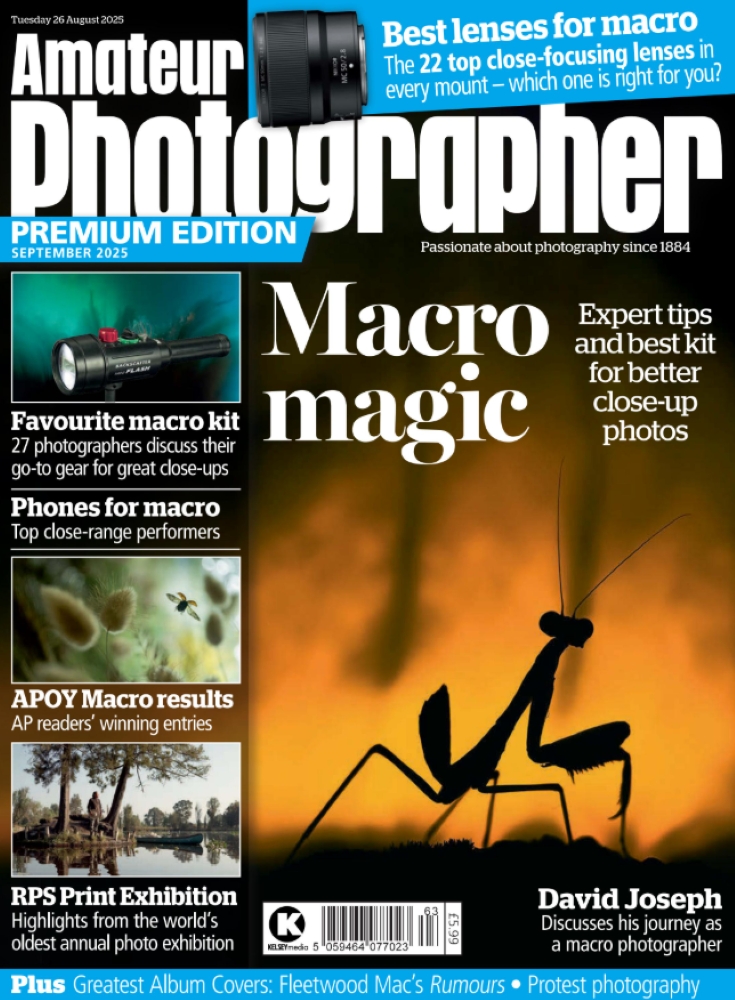Amateur Photographer verdict
The Xiaomi 15T Pro combines 5x optical zoom, pro-level video options, and generous storage, offering flagship-level photography at a lower price – though US buyers will miss out.- 5x optical telephoto reach
- Street photo mode
- 8K video
- No AF on ultra wide or selfie camera
- No proper macro mode
- Not available in US
As far as smartphones go, you should have heard of Xiaomi by now, as the Chinese tech giant is the third biggest brand globally and continues to release impressive smartphones, some of which even made it to our list of the best camera phones for photographers.
At a glance:
- Triple Leica Summilux-branded camera set-up
- 50MP main camera ƒ/1.62, OIS, PDAF, 23mm equivalent
- 50MP telephoto camera ƒ/3, 115mm equivalent. OIS
- 12MP ultra-wide camera ƒ/2.2, 15mm equivalent
- 32MP selfie-camera ƒ/2.2, 21mm equivalent
- 8K video at 30fps, 4K 120fps main, 4K30fps across all
- 6.83inch 144Hz AMOLED display
- 5500mAh battery, 90W wired, 50W wireless
Xiaomi entered the market 15 years ago with affordable smartphones that featured premium design and top-tier specs. The launch of their budget Redmi and later POCO series further cemented their success. In the upper midrange section, we have the T-series with the latest 15T Pro and 15T, topped only by the flagship Xiaomi 15 Ultra. Although widely available in European and Asian markets and with physical shops set to open next year, sadly, Xiaomi is not officially sold in the US.
How I test phones
I review smartphones from the perspective of choosing a smartphone for its photography and camera performance. I look at what the Xiaomi 15T Pro offers, and the features included for photography and video, paying particular attention to the cameras on the phone, photo editing capabilities, the output from each different lens, and the features offered.
Xiaomi 15T Pro – Features
As part of their ongoing collaboration with Leica, the 15T Pro features a Summilux imaging system with a triple lens camera setup alongside a suite of Leica-inspired features. There are Leica Colour profiles, filters, a Portrait style and a whole new Leica Street Photography mode.
The biggest upgrade over its predecessor is the 50MP telephoto camera, which now features 5x optical zoom (up from 2.6x) and a 10x digital enhanced zoom that’s said to deliver “optical level” quality. Beyond that, clarity is improved by AI, and you can zoom up to 100x. It also received optical image stabilisation, which is useful for producing sharper handheld shots and shooting at slower shutter speeds. Also, with a longer, 115mm focal length it is now ideal for telephoto portraits, compressing the scene and creating more flattering results.
While the maximum aperture has narrowed down from f/2 to f/3, this can be offset by the added OIS and improved computational photography features brought on by the latest Xiaomi HyperOS 3.
The remaining cameras are inherited from the Xiaomi 14T Pro, so we get the same high-performing 50MP f/1.6 main camera backed by a large 1/1.3″ sensor with OIS and PDAF, a less stirring 12MP ultra-wide camera and a 32MP selfie camera both with an ƒ/2.2 aperture.
The Xiaomi 14T Pro was already a video beast; the 15T Pro inherits the 8K30p video and further improves 4K recording with a 120p option available on the main sensor and 4K 60fps 10-bit Log recording with LUT import, as well as 4K 30fps HDR10+ for the rest.
Xiaomi 15T Pro – Handling and design
Retaining some recognisable features from the previous model, the 15T Pro also introduces some subtle refinements. The rear cameras sit flush with the camera island, which sits on a new, completely flat glass-fibre back panel.
The whole look is complemented by an aluminium frame. Overall, an elegant and polished design, with a modest shine to it, the Gray version I tested perfectly matching with a silver colour MacBook.
The Corning Gorilla Glass 7i protected 6,83inch screen is marginally bigger than the 14T Pro was.And despite its lower, 3200mAh peak brightness I’ve found it quickly adapts to changing light and is easy to see even in bright sunlight.
Battery life had a welcome boost with a 5500mAh cell, and without adding extra weight. The 15T Pro remains close in size to its predecessor, measuring 162.7mm x 77.9mm, and 7.96mm thickness, and weighing 210 g.
The Xiaomi 15T Pro is supplied with a USB-C charging cable, a soft plastic case and a basic screen protector out of the box.
Xiaomi 15T Pro – Camera App
You get the usual Photo, Video, Portrait and Pro modes alongside a Document mode set up by default, which I swapped around for Fastshot mode straightaway. Swipe up to see the rest of the shooting modes: Ultra HD, Slow motion, Time-lapse, Long-exposure, Panorama, and Supermoon. There is no selectable Night mode as it automatically activates in photo mode, while for videos, it can be toggled on manually. By default, the Leica Authentic colour profile is selected, which creates slightly darker, moody images, while the Vibrant option, as its name suggests, makes colours pop.
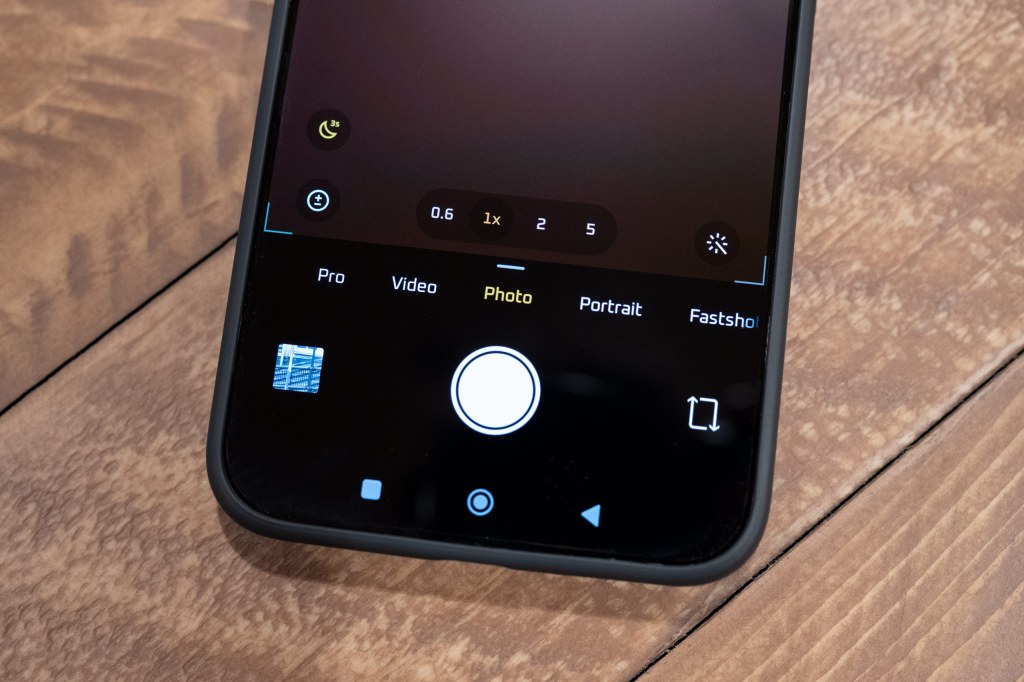
In Pro mode, you can set exposure compensation, shutter speed, ISO, white balance and whether you want to shoot in JPEG or raw in 12.5 or 50MP resolution. It includes some useful presets for slow shutter speed or action shots as well as letting you create and save your own presets.
Macro mode is misplaced under the settings tab, if you swipe down from the top to you’ll find it next to aspect ratio and HDR. It uses the 5x telephoto lens, and results look just like in Portrait mode at 5x. Although in Portrait mode, you can adjust aperture and bokeh for creative effects. In regular Photo mode at 5x, you get a much smaller minimum focusing distance, so you get closer to your subject, though the background blur might not be as smooth. I ended up just using Photo mode at 5x for really close shots, and Portrait mode at 5x when I wanted more freedom to experiment with bokeh and aperture.
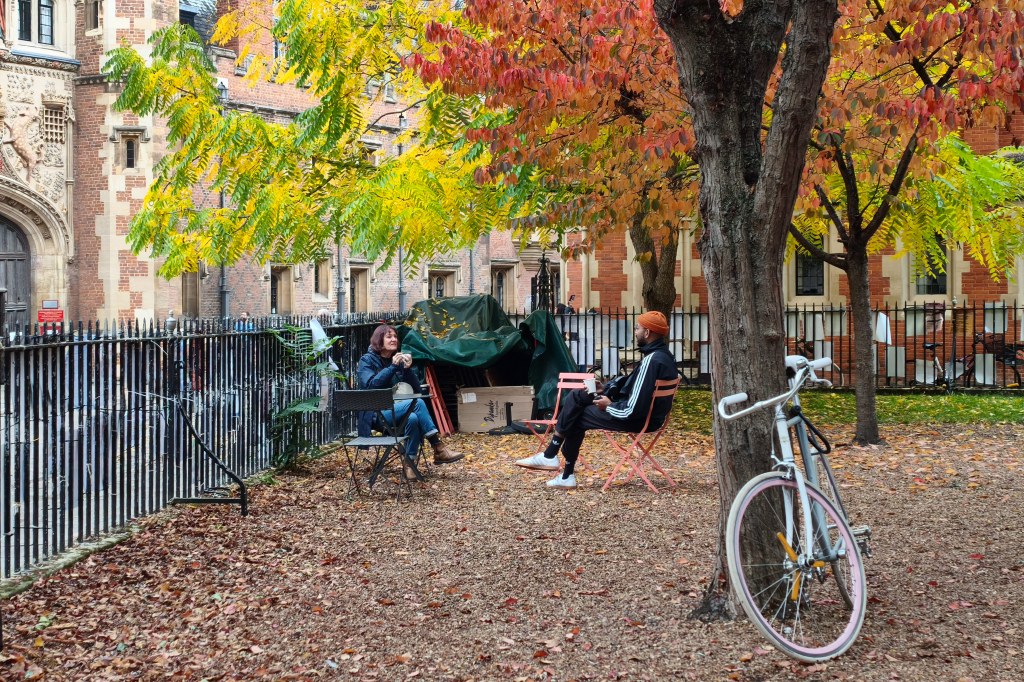
Portrait mode lets you adjust aperture settings, while your selected bokeh effect is added after the photo is taken. In the default editing app you can also blur the background of a photo taken in another mode and bokeh effects too.
What is the Leica street photography mode?
In two clicks, you can capture a rapidly unfolding scene without missing a beat. Built for speed and convenience, this mode is for quick, instinctive shooting. Open the Fastshot a.k.a. Leica Street Photography mode through the camera app or by double pressing the volume button, hold the phone steady, and it automatically takes a photo at the pre-selected focal length. You can choose between 28mm, 35mm, 50mm, and 75mm. There are 15 filters, including 6 Leica-inspired ones. My personal favourite, Leica High Contrast, is great for dynamic black and white street shots. Set the camera app to “Preserve settings” for Fast shot mode so it remembers your filter choice and even your preferred focal length when you reopen it.
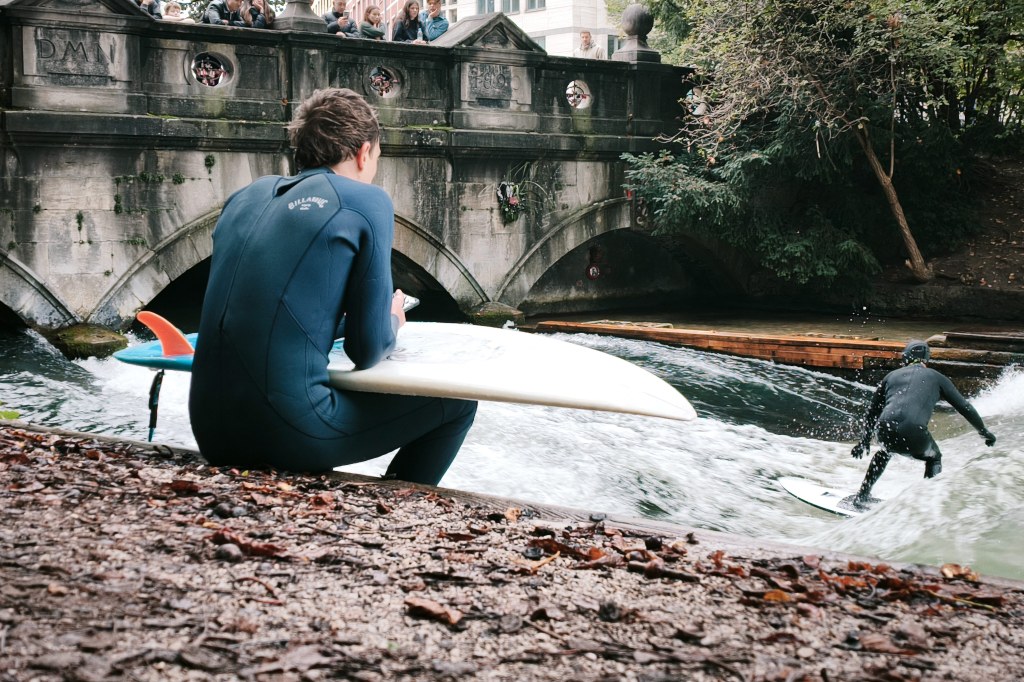
Xiaomi 15T Pro – Performance
In daylight colours appear well-matched between the three cameras, with the main 1x camera resolving the most detail. The telephoto performs very well up until the 10x mark, while above 20x with AI sharpening results can sometimes look a bit overcooked. I found that subjects like architecture and static things work best, while zooming in on a crowd would create less appealing effects. As expected, the ultra-wide camera is the weakest of the three with its 12MP sensor, but in good light, the differences are marginal, with slightly softer results.
The 1x and 2x portraits look good, but where the 15T Pro really shines is the 5x telephoto option for portraits. This focal length compresses the background and creates a more natural reproduction of face’s proportions, overall a more flattering look. Combine this with a f/0.95 aperture setting and a nice bokeh effect ang you got yourself a flattering portrait. You will need to move a bit further away but the results definitely worth it.
At the highest aperture setting edge detection can be a little hit and miss, as you see here it struggled to separate small strands of hair. You can dial down the out of focus effect after the photo was taken, or if you happened to shoot in regular photo mode you can add it in the deafult editor later.

With the aperture slider included, you have control over how blurred you want the background to be. When used for photographing objects especially with a well defined outline it does a good job detecting edges, while with messy hair it might need a few attempts to properly detect edges.

The selfie camera puts in a good performance, albeit with results a little on the soft side. As there’s no autofocus, you’ll need to get in the “sweet spot” for the sharpest results. Not a class-leading performer, but you can get nice results even in less than ideal light and if you don’t push the aperture slider too far.

As I mentioned, when macro mode is toggled on the minimum focusing distance increases, but you still get very appealing close-up shots. For best results just use the 5x lens, as it will let you focus much closer.
Images taken at dusk and in low light look good, with the 15T Pro essentially turning a much darker scene into a nearly daylight one. However when photographing at night, the ultra-wide 0.6x lens produces noticeably darker and softer results, often with a warmer tone, compared to the 1x and telephoto lenses.
Xiaomi 15T Pro – Value for Money
Starting at £649 for the 256GB model, the Xiaomi 15T Pro stands out for offering double the storage of most rivals with similar specs. The 512GB version is priced at £699 while the 1TB option costs £799.
The Samsung Galaxy S25 starts at £799 for the 128GB version, with a triple lens setup, but with only a 10MP telephoto camera. The
You can find the older Google Pixel 9 on Amazon for £642 for the 256GB variant which competes head-to-head with the Xiaomi 15T Pro in terms of price and storage, it also takes great photos from its main camera, but the trade-off is that you won’t get a telephoto unit.
On the higher end, the Apple iPhone 17 is priced at £799 for the 256GB model and while you get all the bells and whistles, you are still left without a telephoto camera.
With a higher base storage option the Xiaomi 15T Pro undercuts its competitors in this price range when you consider the amount of memory and capable triple lens setup it offers.
Xiaomi 15T Pro – Verdict
The Xiaomi 15T Pro is an impressive upper-midrange smartphone that puts photography at its core. Its improved 5x optical telephoto reach, genuine creative tools combined with 8K video options, will appeal to both casual shooters and more serious enthusiasts alike.
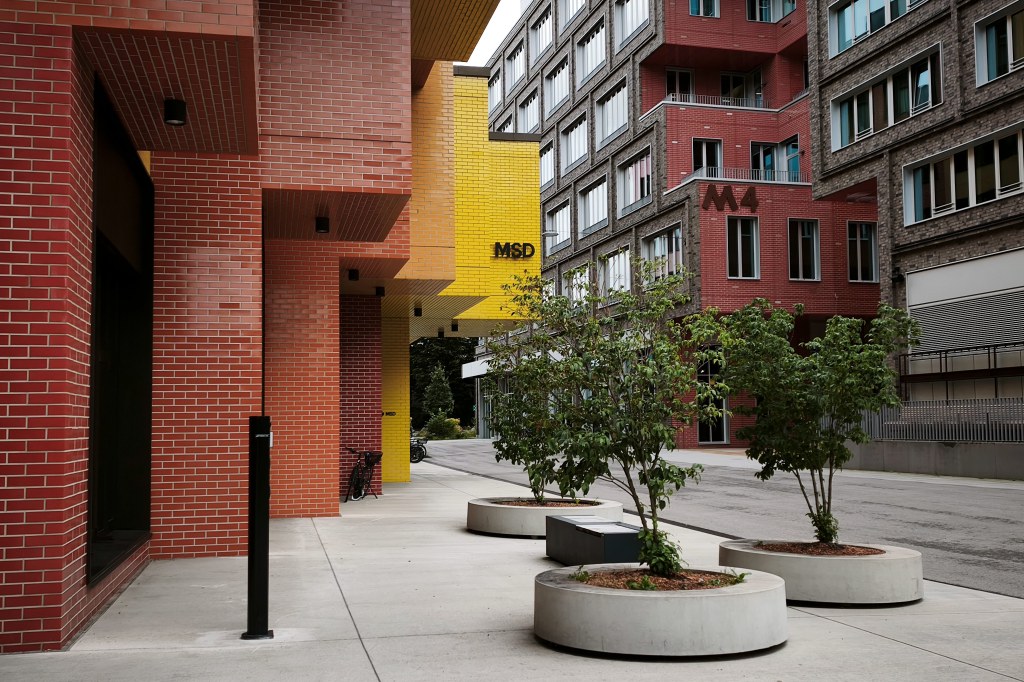
It’s not without compromises – the lack of autofocus on the ultra-wide and selfie cameras will be noticed by some, and its absence from the US market is frustrating – but in regions where it is available, the 15T Pro offers outstanding value. With generous storage at every tier and a feature set that competes directly with pricier flagships, it stands out as one of the most compelling choices for anyone who wants a capable camera phone without pushing into premium territory.

Full Specifications
| Main, wide-angle camera | 50MP f/1.62,1/1.31” sensor, 2.4μm, OIS, PDAF, 23mm equiv. |
| Telephoto camera | 50MP f/3, 115mm equiv. OIS, 5x optical, up to 100x digital zoom |
| Ultra wide | 12MP f/2.2, 15mm equiv. (fixed focus) |
| Selfie camera | 32MP, ƒ/2.2, 21mm equiv. 90° FOV (fixed focus) |
| Video | 8K30fps, 4K 30fps, 60fps, 120fps(main), 1080p 30fps, 60fps, HDR10+ across focal lengths, 10-bit Log recording with LUT import |
| Battery | 5500mAh, 90W wired, 50W wireless charging |
| Screen | 6.83″ 144Hz (2772 × 1280), 1.6K resolution, 3200nits peak brightness |
| Processor | MediaTek Dimensity 9400+ |
| Storage | 256GB, 512GB, 1TB |
| Operating System | Xiaomi HyperOS 3 |
| Dimensions | 162.7mm x 77.9mm x 7.96mm |
| Weight | 210g |
| Dust and water resistance | IP68 and immersion in fresh water 3m |
Related reading:
- Xiaomi 15 Ultra: The perfect smartphone for photographers
- Xiaomi 14 Ultra Review – among the best phones for photographers?
- iPhone 15 Pro Max vs Xiaomi 14 Ultra: Cameras compared


